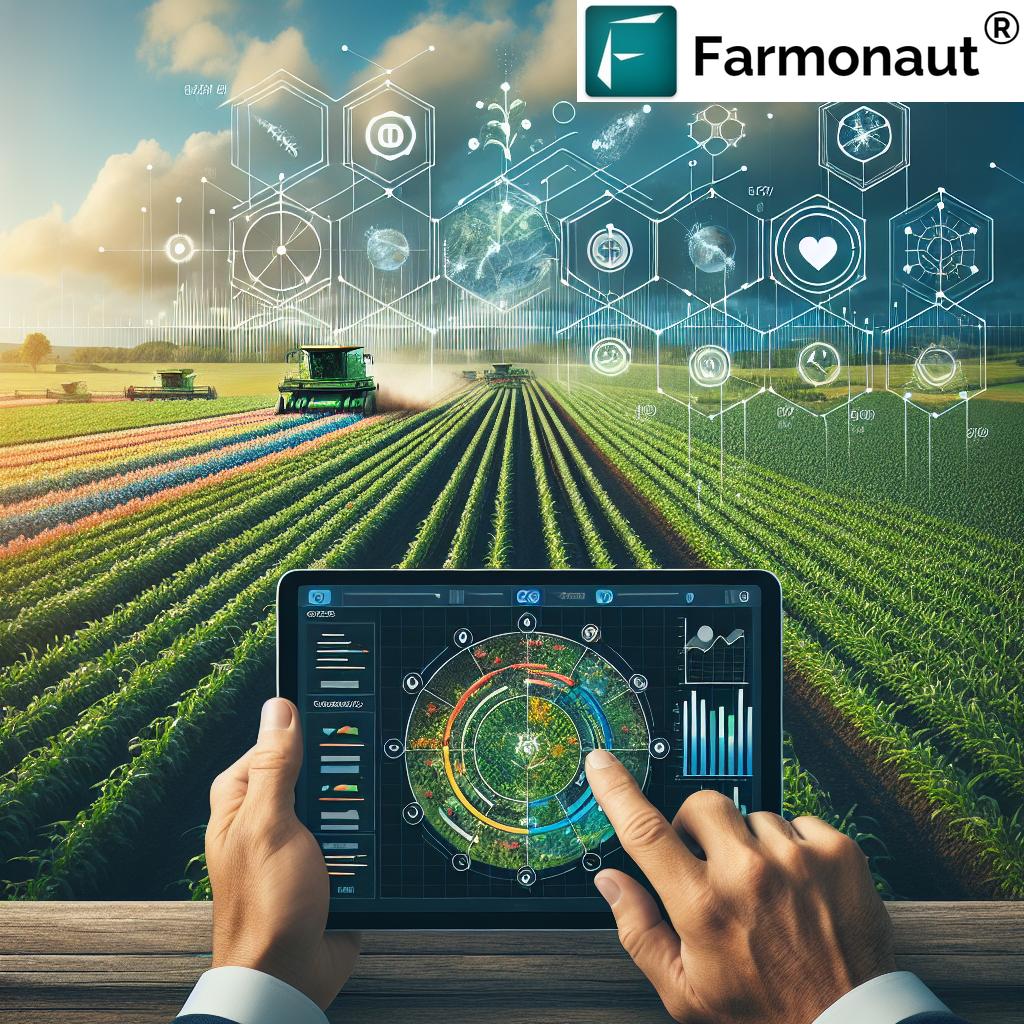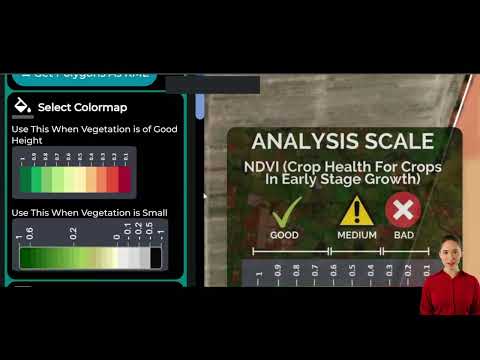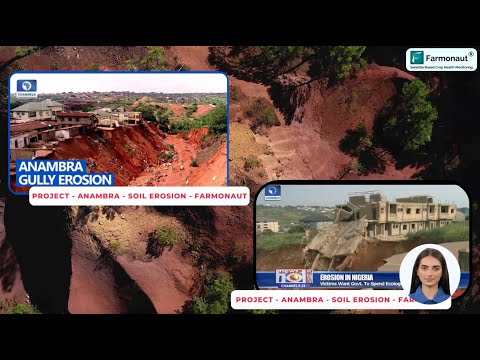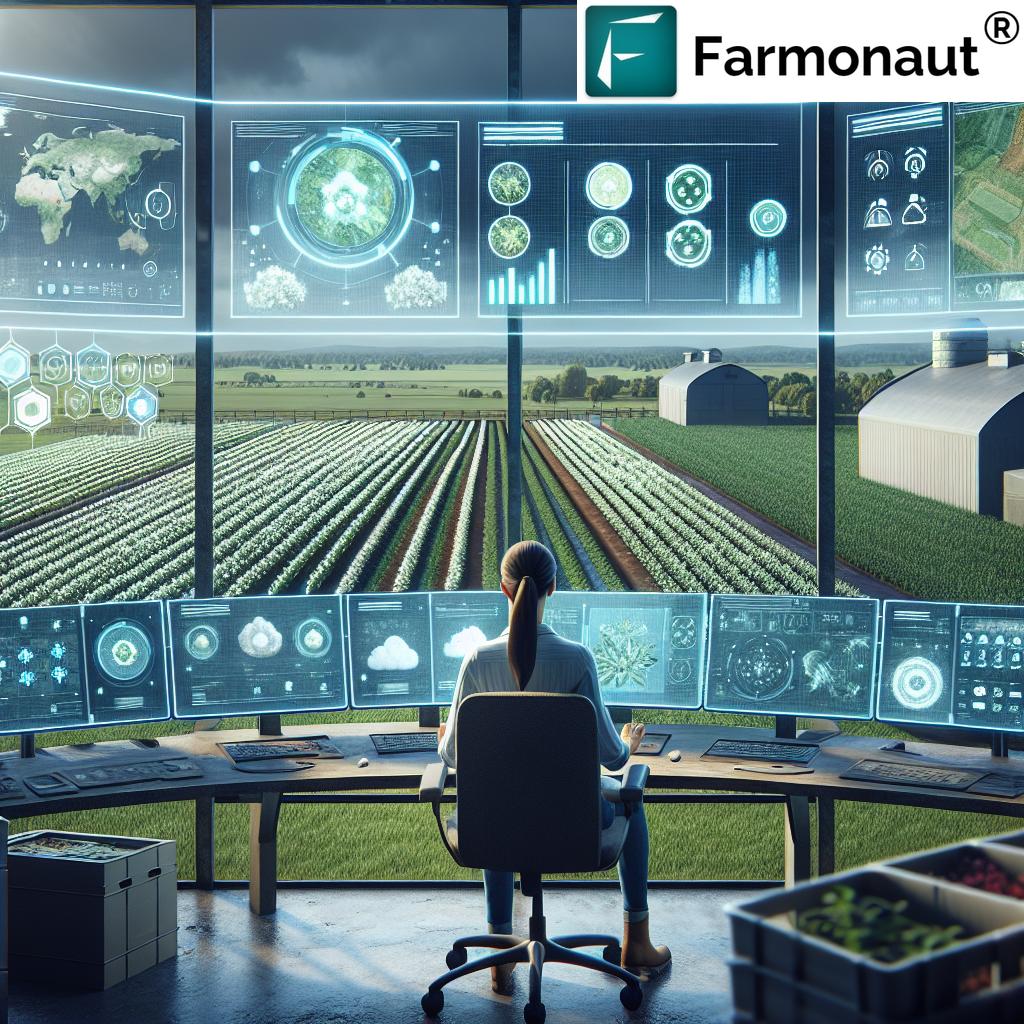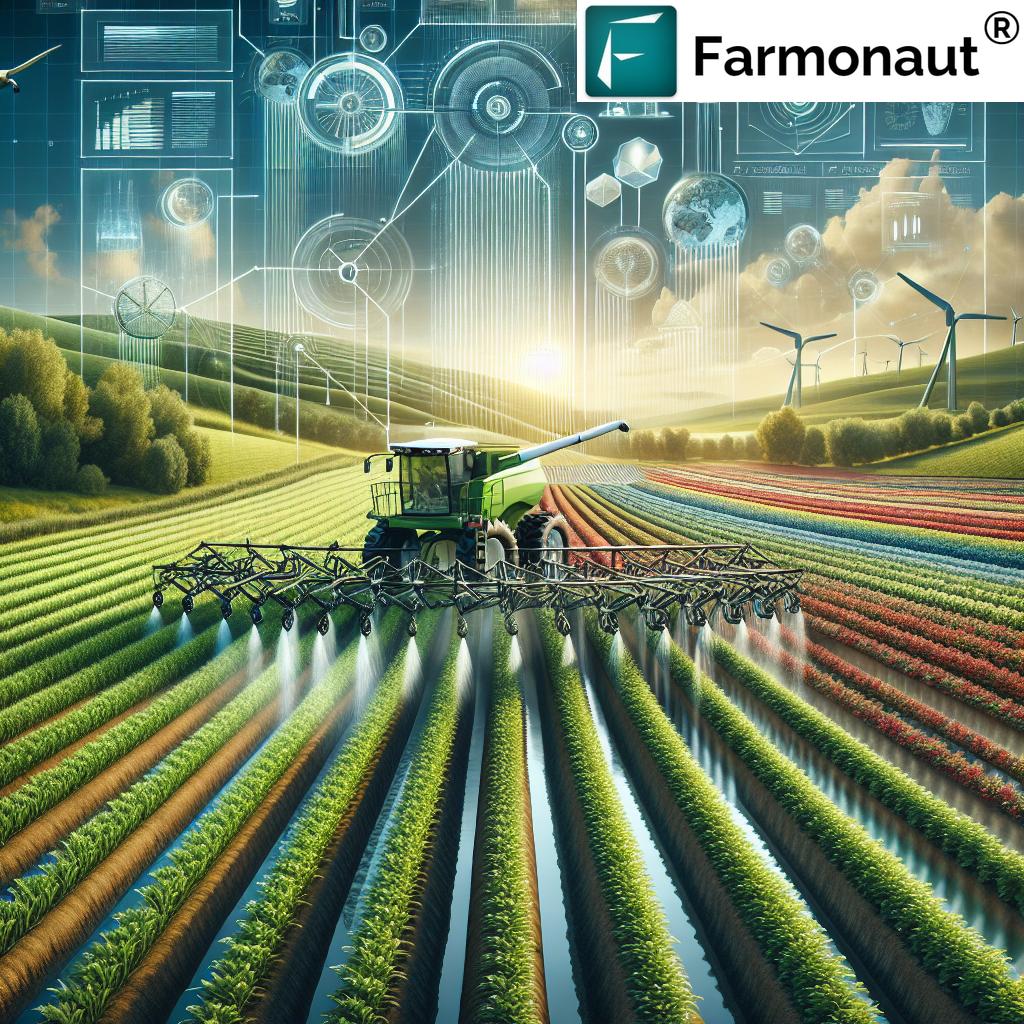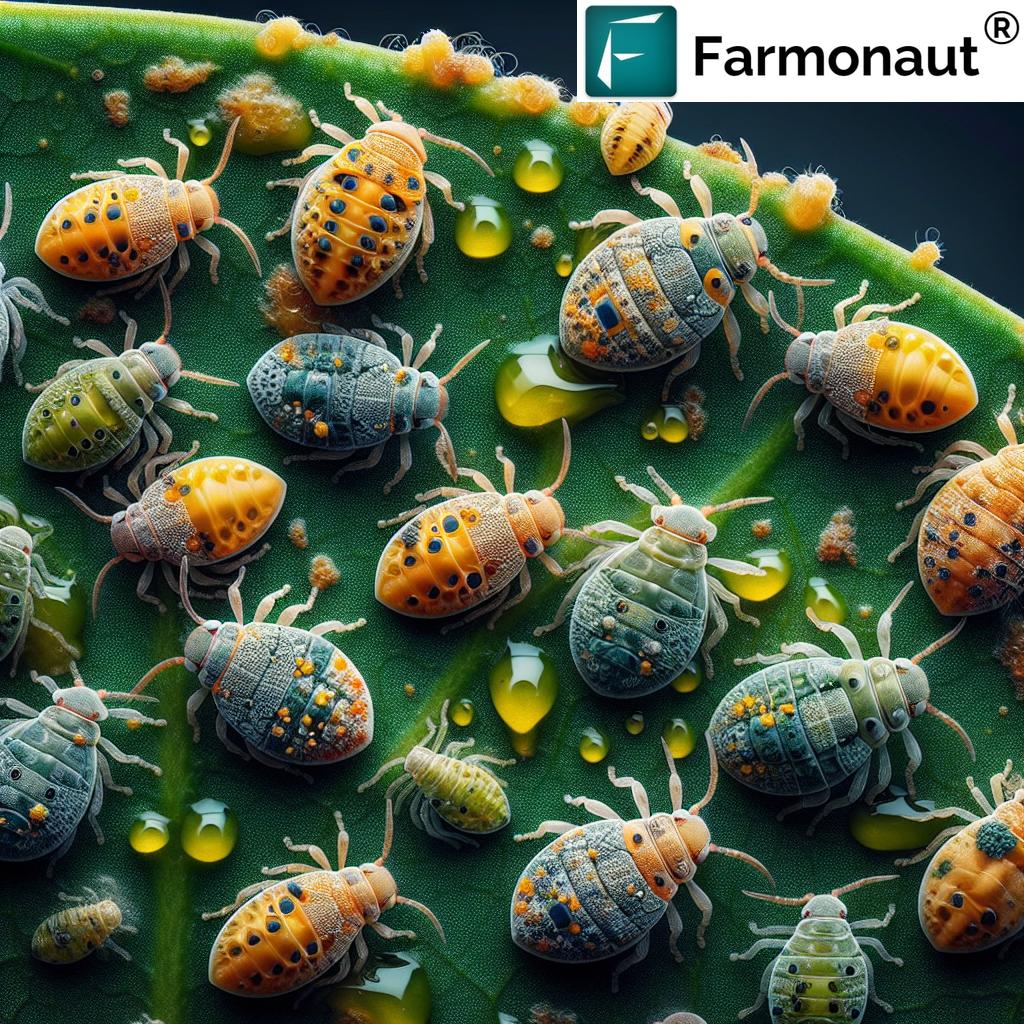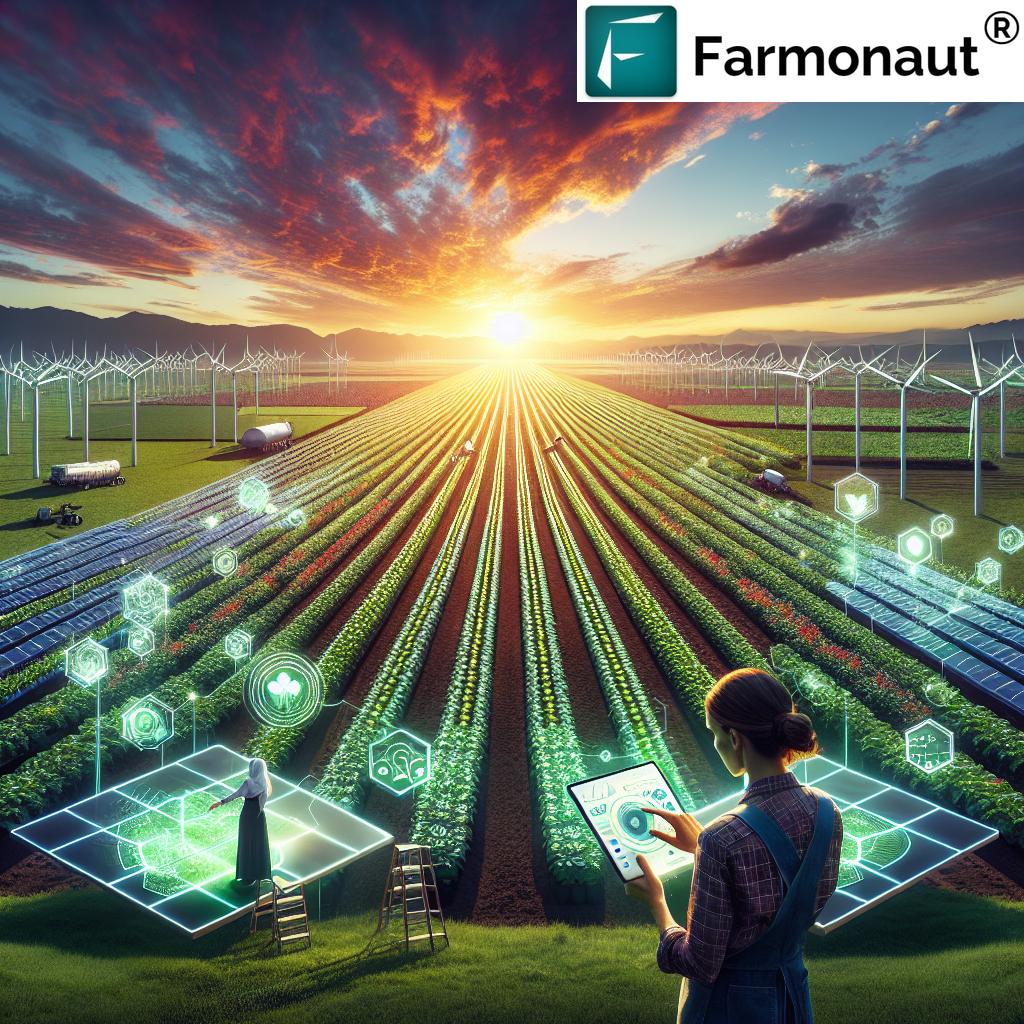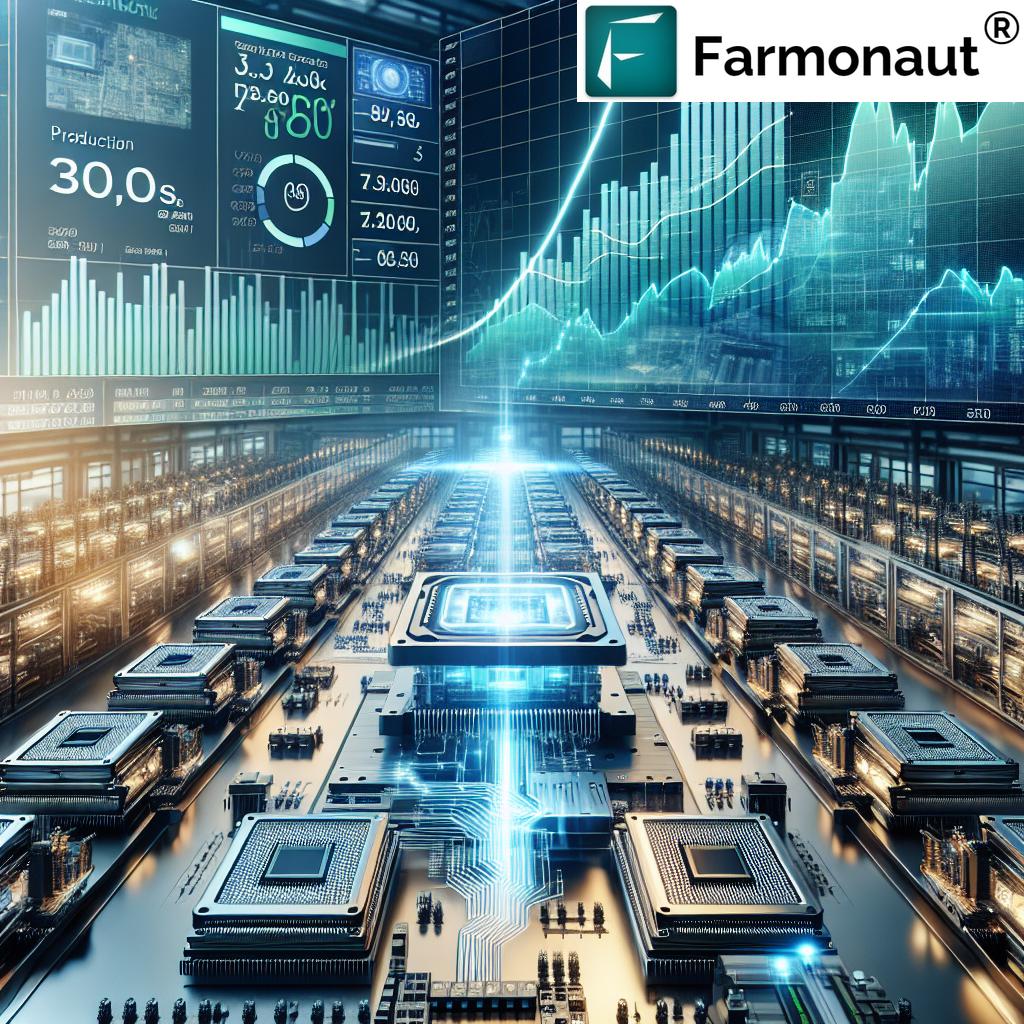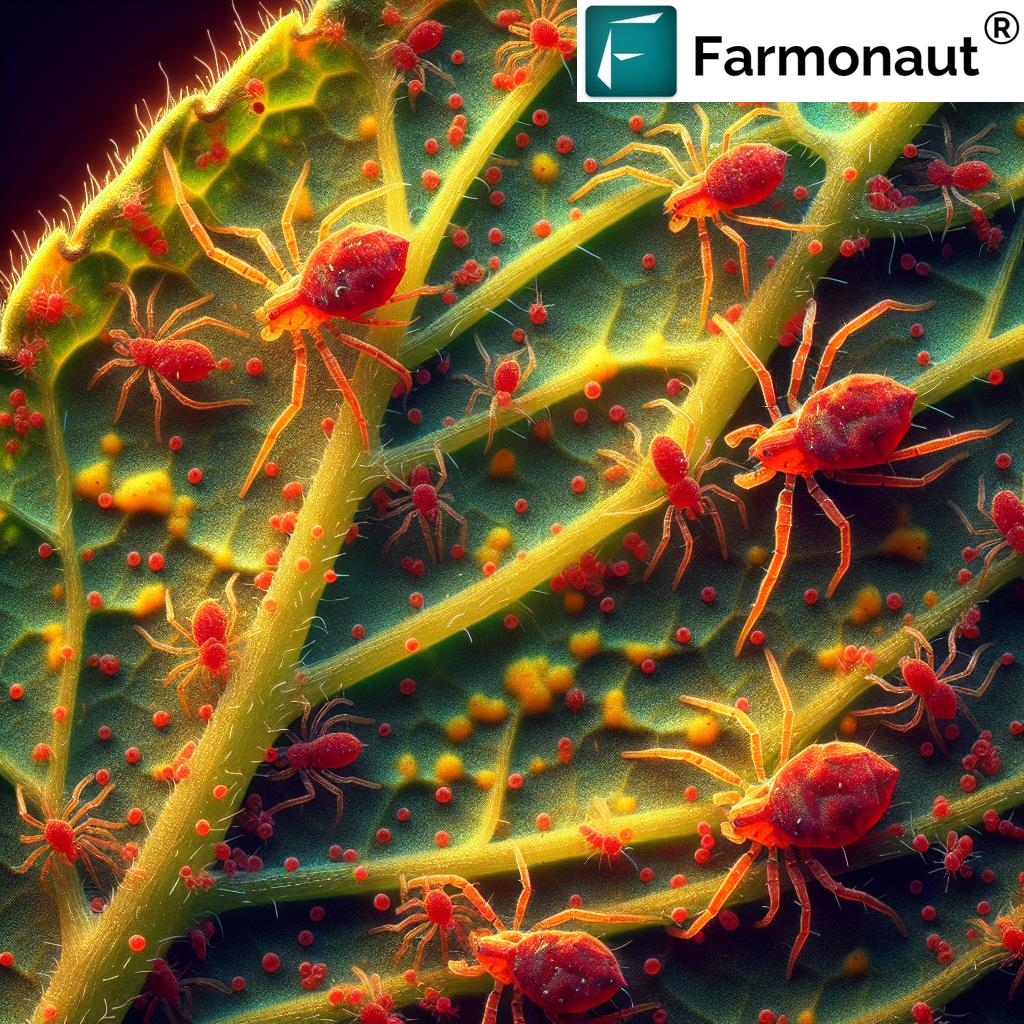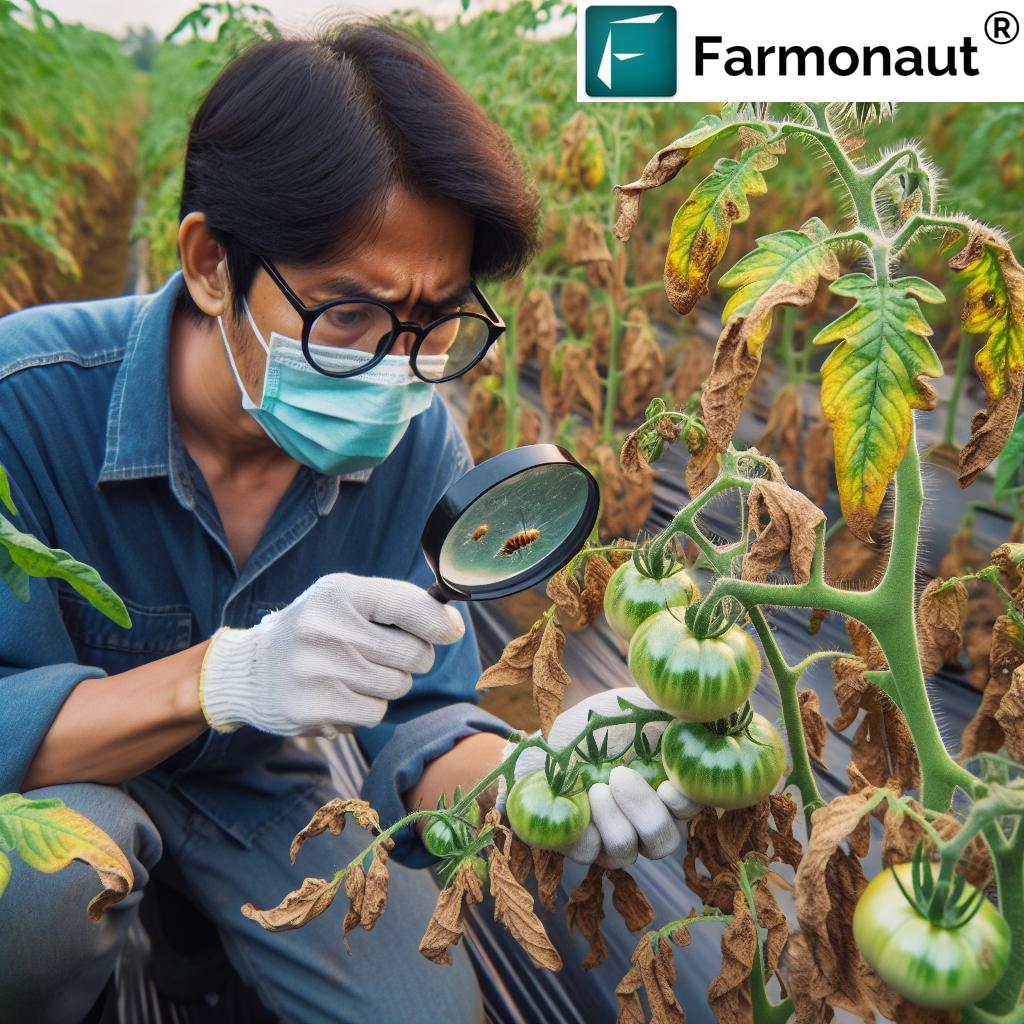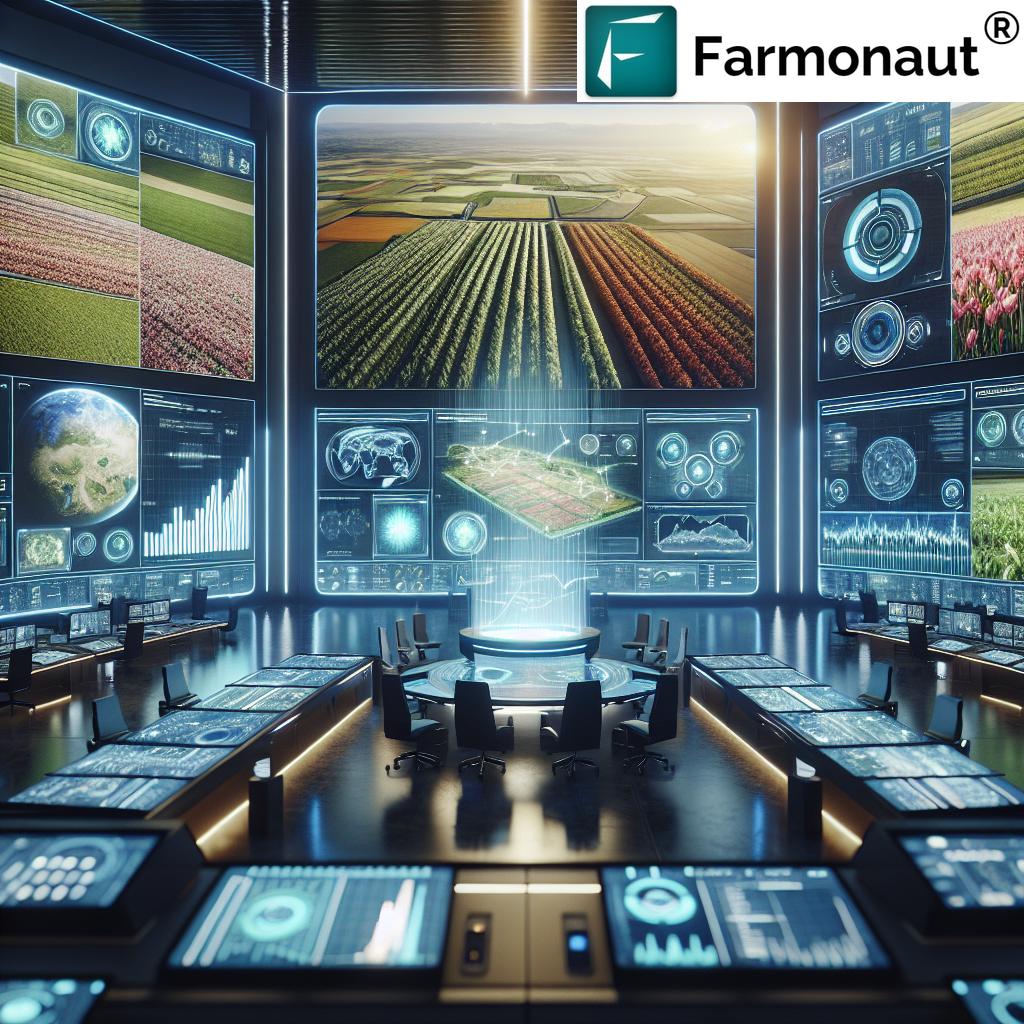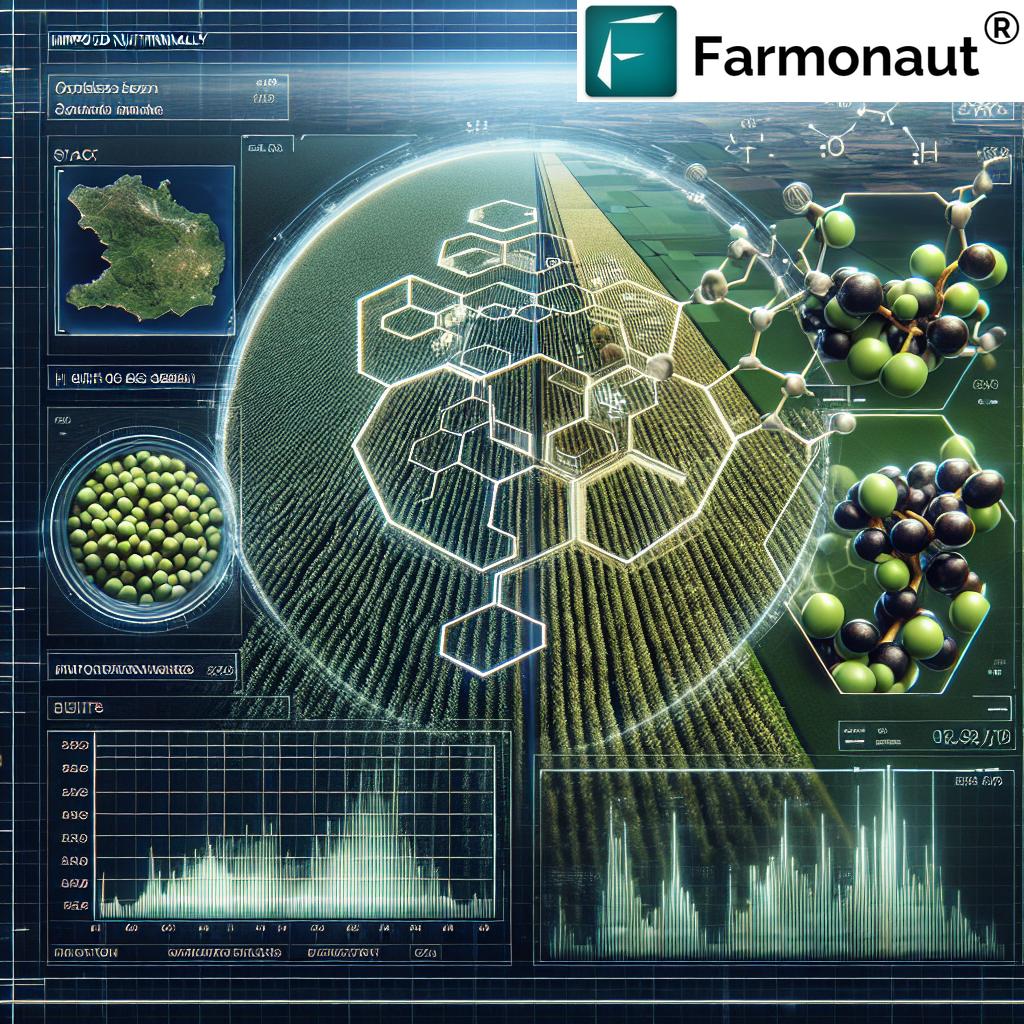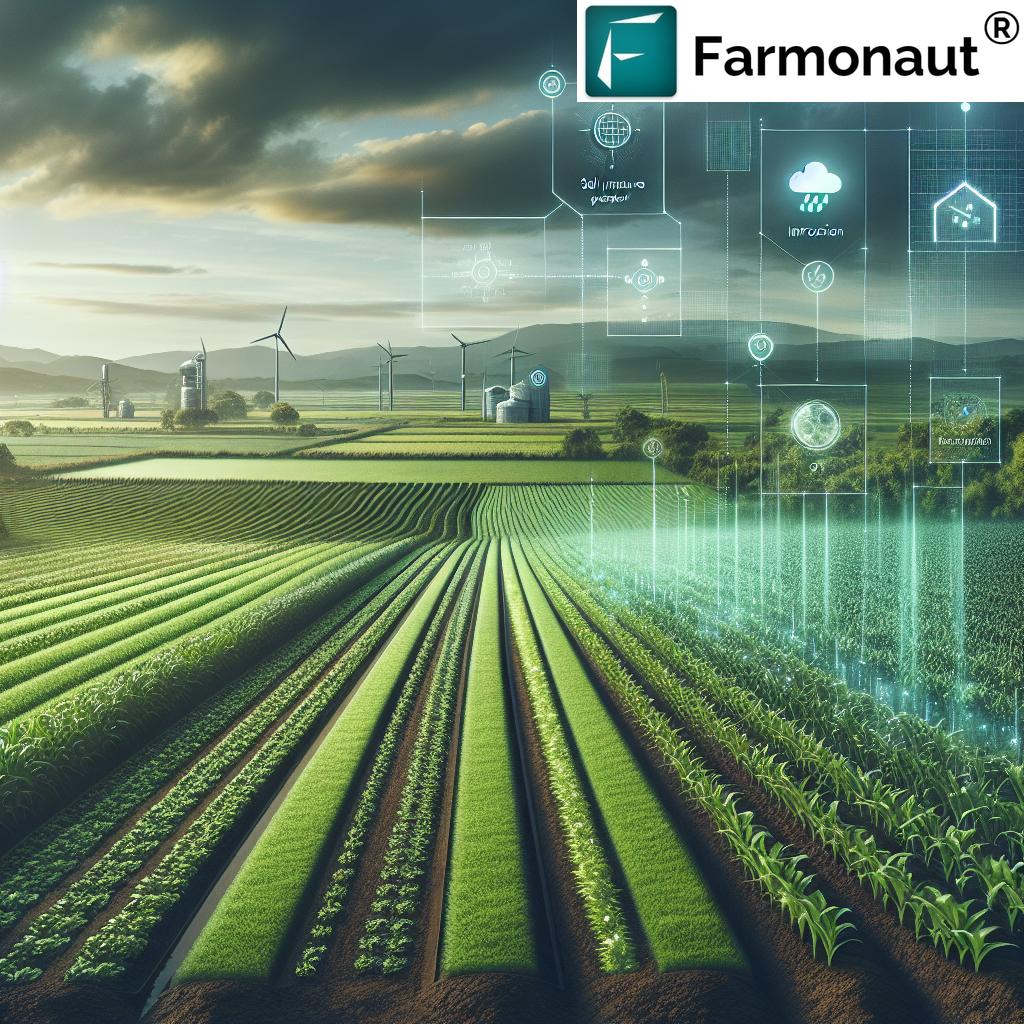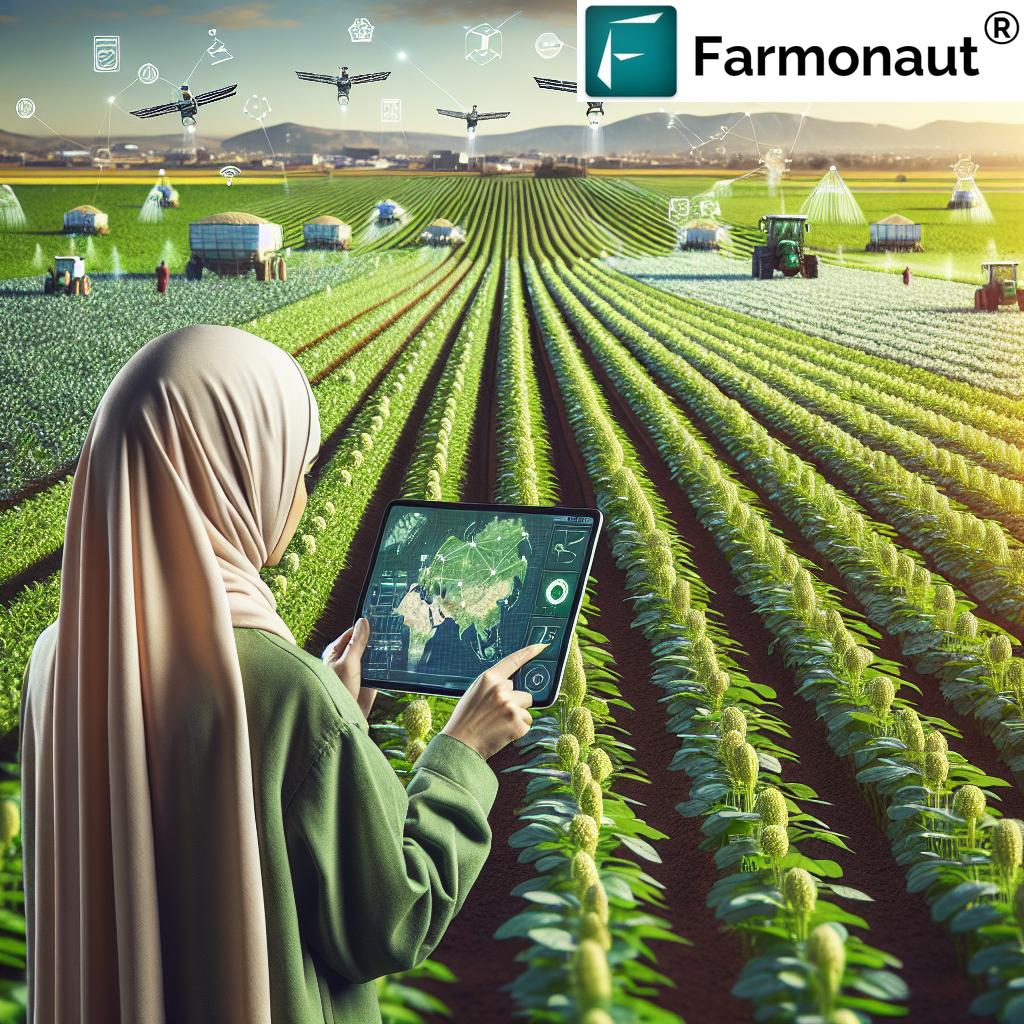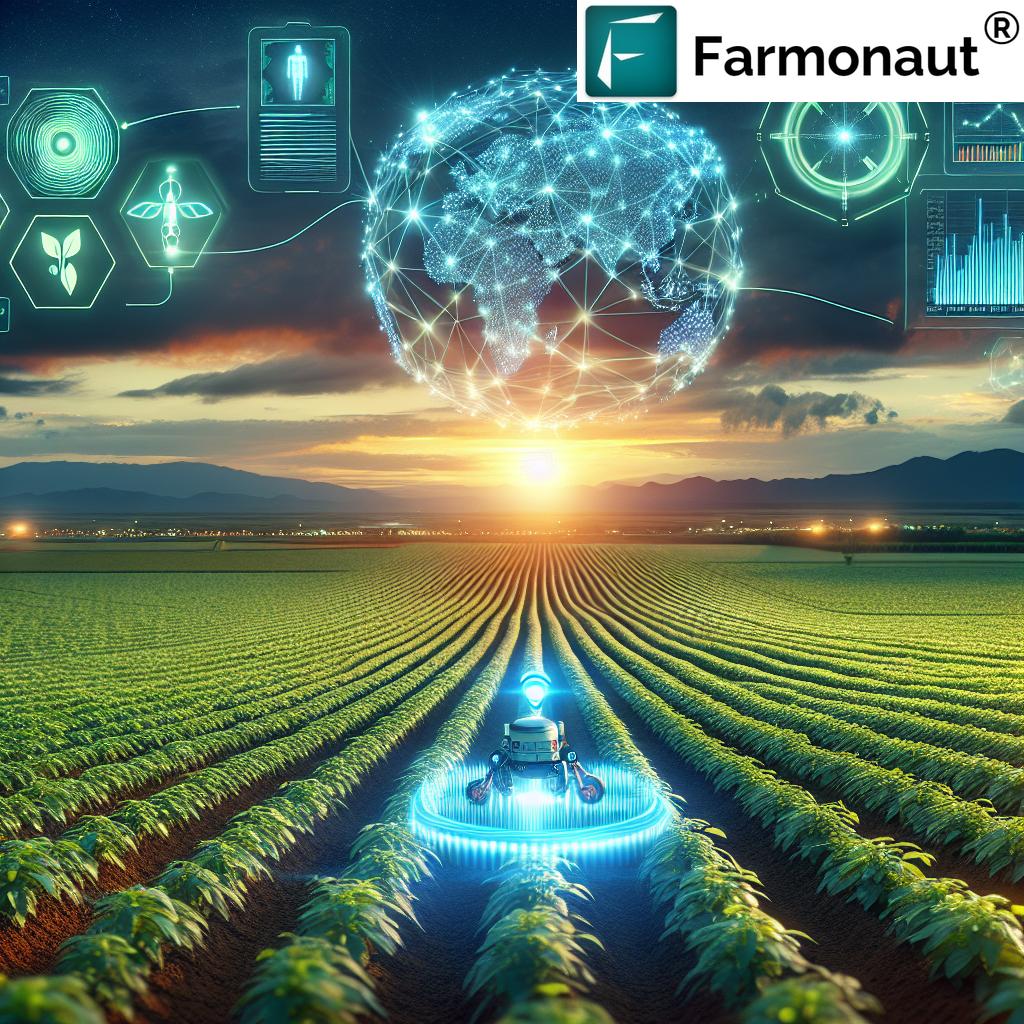Precision Agriculture Software: 7 Hacks for Sustainable Farms
“Precision agriculture software can increase crop yields by up to 20% through advanced data analytics and AI-driven insights.”
Table of Contents
- Introduction
- Understanding Precision Agriculture Software
- Core Components of Precision Agriculture Software
- Benefits of Precision Agriculture Software
- Precision Agriculture Software: 7 Hacks for Sustainable Farms
- Feature Comparison Table of Precision Agriculture Software Solutions
- Farmonaut: Satellite-Based Precision Agriculture Solutions
- Overcoming Challenges and Considerations
- Future Outlook of Precision Agriculture
- Farmonaut Subscriptions
- FAQ: Precision Agriculture Software
- Conclusion
Introduction
In today’s rapidly evolving agritech landscape, precision agriculture software is carving out a transformative path for sustainable farming, forestry, and agricultural operations. By combining advanced data analytics, AI, and machine learning with satellite imagery for agriculture, these platforms enable us to maximize resource efficiency, boost crop yields, and enhance environmental sustainability—directly at the field level.
The days of blanket applications and uniform field treatment are long gone. Now, precise crop monitoring solutions deliver actionable insights at unprecedented scales, promoting sustainable farming practices and optimizing every aspect of the cultivation process. In this comprehensive guide, we’ll explore how data-driven tools are revolutionizing agriculture—and unveil 7 powerful hacks that empower us to create highly efficient, sustainable, and profitable farms using precision agriculture software.
Let’s dive into the future of agriculture—where technology, sustainability, and profitability go hand in hand.
Understanding Precision Agriculture Software
At its core, precision agriculture software fuses various modern technologies to collect, analyze, and interpret data from the field, enabling farmers and agricultural managers to make precise interventions. The integration of sensors, drones, satellite imagery, and advanced analytics lets us move away from guesswork, instead relying on accurate, field-specific intelligence.
Across all scales—from smallholder plots to vast agribusiness plantations—these tools deliver actionable data for improved resource allocation, timely interventions, and optimized growth monitoring. Let’s delve deeper into the essential components and why they matter for modern, sustainable field management.
Core Components of Precision Agriculture Software
To fully appreciate the power of precision farming technology, we must examine its building blocks. Here’s what enables such remarkable advances in operational efficiency and sustainable farming practices:
1. Data Collection and Integration
- Multiple Data Sources: Precision agriculture software collects real-time data from GPS-equipped machinery, field sensors (for soil moisture, NPK, etc.), drones, and satellite imagery.
- Soil Health: Software monitors key metrics—organic matter, pH, compaction, moisture—fueling targeted interventions via soil health analysis software.
- Crop Growth & Phenology: Automated crop monitoring solutions track vegetative growth stages, identify stress, and forecast yield potential.
- Environmental & Weather Data: Software integrates up-to-date weather information, guiding irrigation timing and input applications for increased efficiency and risk mitigation.
- Remote Sensing: High-resolution satellite imagery for agriculture and drone data map field variability, crop vigor, and anomalies.
2. Advanced Data Analysis and Interpretation
- Artificial Intelligence (AI): AI in agriculture and machine learning algorithms analyze vast, multi-layered data to extract insights and predict outcomes.
- Pattern Recognition: Software identifies trends—such as disease outbreaks or nutrient deficiencies—long before they’re visible to the naked eye.
- Resource Optimization: By understanding input/output correlations, tools recommend adjustments to fertilizers, pesticides, and water applications.
3. Decision Support & Prescription Mapping
- Prescription Maps: Variable rate application tools automatically generate spatial “prescriptions” for inputs, targeting only the zones that need them most.
- Integrated Farm Management Systems: Unified dashboards let us manage operations across multiple fields and even coordinate logistics and labor needs.
- Automated Recommendations: AI-driven advisories help direct agronomic actions precisely in response to real-time feedback.
4. Continuous Monitoring & Reporting
- Real-time Surveillance: Continuous monitoring of field conditions, crop health, and intervention results.
- Smart Alerts: Automated detection and notification systems warn us of emerging issues (pests, water shortfall, weather risks) for proactive management.
- Custom Reports: Data visualization and reporting help guide strategic decisions and document compliance, sustainability, or certification requirements.
Benefits of Precision Agriculture Software
The positive impacts of precision agriculture software ripple from the field level right through the agricultural supply chain. Let’s look at the major benefits that make these platforms indispensable for modern agricultural management:
- Resource Optimization: We can minimize input waste by targeting fertilizers, pesticides, and water usage only where they’re needed—cutting costs and reducing environmental impact.
- Yield Increases: Data-driven, targeted interventions help us prevent stress, disease, and nutrient limitations before they reduce our harvest, boosting productivity.
- Sustainability: By fostering sustainable farming practices—from smart irrigation to environmentally responsible input use—we manage resources for long-term viability and ecosystem health.
- Risk Management: Early warning systems flag developing threats (like pest infestations or unusual weather), supporting proactive interventions and improving resilience.
- Traceability and Transparency: Technologies such as blockchain-based traceability ensure our products are tracked securely from field to consumer, building trust and regulatory compliance.
- Data-Driven Decision Making: Integrating AI and real-time feedback, we can refine strategies continuously and maximize returns on every hectare.
Precision Agriculture Software: 7 Hacks for Sustainable Farms
Now, let’s reveal the seven most impactful hacks for creating robust, sustainable, and efficient farms using modern software platforms and technologies like Farmonaut.
1. Leverage Satellite-Based Crop Health Monitoring
With satellite imagery for agriculture, we can monitor crop health across entire fields—identifying stressed plants, waterlogged patches, and pest-affected zones. Farmonaut’s multispectral satellite monitoring tracks NDVI (Normalized Difference Vegetation Index), soil moisture, and other vital indicators to enable precise, timely interventions. Real-time alerts help minimize yield losses, optimize resource use, and uphold the principles of sustainable field management.
Use Case: Prevent the blanket application of water or inputs by applying only where the satellite data suggests stress or deficiency, directly boosting both efficiency and sustainability.
2. Integrate AI-Driven Crop Management Advisory
Personalized advisories—powered by AI in agriculture and advanced machine learning—process geospatial, environmental, and field data to produce actionable, context-specific recommendations. For instance, Farmonaut’s Jeevn AI Advisory system delivers real-time insights, from predicting optimal irrigation windows to suggesting crop-specific fertilizer schedules.
Benefit: Our decisions are always data-backed, risk-aware, and tailored for the unique conditions of each season.
3. Adopt Variable Rate Input Application Tools for Efficiency
Say goodbye to one-size-fits-all input application. Variable rate application tools allow us to apply fertilizers, pesticides, and water where and when they are truly needed, reducing cost and input waste. Software-generated prescription maps can be uploaded to compatible machinery for seamless, automated control.
Example: Reduce nitrogen fertilizer use on healthy patches, preventing runoff and over-fertilization, while directing more resources to struggling areas.
4. Employ Blockchain Traceability for Transparency
Traceability is a must-have for today’s consumers and regulatory requirements. By deploying blockchain-based traceability solutions, we can securely track every agricultural product’s journey—from seeding to harvest to retail. Every step is logged in an immutable ledger, fostering consumer trust and reducing the risk of fraud.
Key Point: This technology is invaluable for organic certification, export markets, and brands striving for responsible sourcing.
5. Centralize Operations with Integrated Farm Management Systems
Efficiently manage lands, labor, logistics, and field operations from a single dashboard. Integrated farm management systems like Farmonaut’s platform let us coordinate field activities, automate scheduling, track interventions, and adjust strategy in real time.
Example: Agro-businesses can oversee thousands of acres remotely, track resources and monitor progress across multiple locations, maximizing both productivity and oversight.
6. Optimize Inputs Using Soil Health Analysis Software
Through automated soil health analysis software, we can map varying fertility, moisture, and physical conditions across fields. This enables us to nurture soil health via targeted amendments, improving both short- and long-term productivity while reducing unnecessary input consumption.
Best practice: Use Farmonaut’s soil moisture and nutrient analysis to design precise irrigation and amendment plans tailored to each zone, not just the field as a whole.
7. Track Carbon Footprints and Commitment to Sustainability
With rising environmental scrutiny, carbon footprint tracking tools on platforms like Farmonaut provide real-time emission monitoring. This helps us minimize negative impacts, ensure compliance, and demonstrate our dedication to climate-positive agricultural practices.
Use Case: Monitor emissions from energy use, fertilizer applications, and field machinery—then act on analytics to reduce and offset your carbon output.
“Over 70% of sustainable farms now use precision software for real-time crop monitoring and efficient field management.”
Feature Comparison Table of Precision Agriculture Software Solutions
| Software / Function | Core Feature | Est. Yield Increase (%) | Resource Use Reduction (%) | Compatibility (Machinery, Drones, Sensors, etc.) | Ease of Use (1-5) | Sustainability Impact |
|---|---|---|---|---|---|---|
| Farmonaut | Satellite-based crop health, AI advisory, Carbon footprinting, Blockchain traceability, Resource & Fleet management | 15–20 | 15–25 | Web/mobile app, API, Satellite, IoT Sensors, Drones | 5 | High |
| Agremo | AI analytics, Drone-based crop monitoring, Prescription mapping | 10–18 | 12–18 | Drones, Sensors, Farm machinery | 4 | High |
| Agristry | Autonomous field mapping, Weed detection via aerial imagery | 8–15 | 10–14 | Drones, Geospatial mapping, Machinery integration | 4 | Medium |
| GeoPard | Geospatial analytics, Cloud-based variable rate application | 10–14 | 12–17 | Satellites, Soil/plant sensors, Machinery, Web | 4 | High |
| PCT Agcloud | Data storage, cleaning, analytics, Field management | 8–12 | 8–12 | Farm machinery, IoT, Web/app | 4 | Medium |
| Granular Inc. | Financial/agronomic input management, Data-driven planning | 6–12 | 7–11 | Web/mobile, Machinery integration, Sensors | 3 | Medium |
| Gamaya | Drones with hyperspectral imaging, Crop & soil analysis | 8–13 | 8–13 | Drones, Hyperspectral cameras | 3 | Medium |
| Prescription Mapping (VRA) | Zone-specific input mapping | 8–15 | 14–22 | Machinery, field maps from any platform | 4 | High |
Farmonaut: Satellite-Based Precision Agriculture Solutions
Farmonaut’s mission is to democratize field intelligence and advanced technology for every farmer, regardless of scale. By combining satellite imagery, artificial intelligence, and advanced data analytics (including API developer tools), Farmonaut enables affordable, accessible precision agriculture—from real-time crop monitoring to blockchain-based traceability, and carbon footprint management.
Our platform is available through Android, iOS, and web applications, making it easy to monitor, manage, and optimize all farming operations from any device. Here’s a look at the technologies and solutions powering the next-generation farm:
- Satellite-Based Crop Health Monitoring: Using multispectral imagery, we continuously track NDVI, soil moisture, and more for proactive management of crop health and field conditions.
- Jeevn AI Advisory System: Real-time, AI-based recommendations—tailored to precise weather, field data, and crop requirements—for smarter, more efficient operations.
- Blockchain Traceability: Our traceability tools secure every product’s journey, building regulatory and consumer trust.
- Resource and Fleet Management: Streamline field logistics, minimize downtime, and optimize the usage and tracking of fleet and machinery.
- Carbon Footprinting: We offer carbon emission tracking so you can measure, manage, and reduce environmental impact.
- Crop Loan & Insurance Enablement: Through satellite-based verification, financial access becomes safer, speedier, and more transparent.
For developers and businesses seeking tailored solutions or integration, our Farmonaut API and developer documentation are open for scalable, custom agriculture applications.
Overcoming Challenges and Considerations in Precision Agriculture Software
As with any technological revolution, adopting precision agriculture software is not without its hurdles. Here’s how we as practitioners can address and overcome the main challenges, paving the way for sustainable, future-ready operations:
- Data Management & Storage: The sheer volume of satellite, sensor, and drone data requires robust, scalable storage and fast processing. Cloud-based platforms—like Farmonaut—streamline this process and offer user-friendly interfaces without specialized IT infrastructure.
- Integration with Machinery & Systems: Ensuring compatibility across existing hardware and software is key. Select platforms with broad API and device support, and choose variable rate application tools that export universal file formats for all modern farm machinery.
- Cost & Accessibility: While the initial investment is a concern, affordable subscription models and pay-per-hectare pricing reduce barriers and allow even small and medium farmers to benefit.
- Data Security & Privacy: Farm data security is paramount. Ensure your provider uses modern encryption, complies with regulations, and offers transparent privacy guarantees.
- Training and Ease of Use: Platforms should offer comprehensive training, simple user interfaces, and strong customer support so that users of any background can achieve quick adoption and tangible results.
Future Outlook: The Evolution of Precision Agriculture Software
The next era of precision farming technology holds promise far beyond today’s already impressive capabilities. Here’s what lies ahead for us:
- Deeper AI Integration: Autonomous field scouting, yield prediction, and automated anomaly detection will become the norm, as AI models continue to improve and datasets grow.
- Real-Time, On-Field Sensing: As more advanced sensors and IoT devices are deployed, every meter of the farm can be monitored—unlocking ultra-local, hyper-specific interventions.
- Universal Connectivity: Open platforms and seamless API connections will allow us to coordinate everything—machinery, sensors, drones, and platforms—in one ecosystem, regardless of vendor.
- Wider Accessibility: As software becomes more affordable and intuitive, global adoption—across developing and established markets—will skyrocket.
- Holistic Sustainability Tools: Future solutions will not only optimize productivity, but also measure biodiversity, pollinator activity, and long-term soil resilience, linking sustainability certification with operational analytics.
As digital transformation accelerates, precision agriculture software will remain at the heart of resilient, innovative, and sustainable farming for tomorrow’s world.
Farmonaut Subscriptions for Precision Agriculture Software
Whether you manage a single field, a multi-region agribusiness, or require seamless integration with your internal systems, Farmonaut’s flexible subscription plans deliver real-time crop monitoring and comprehensive precision agriculture tools at affordable rates. Select your ideal plan based on area, features, and update frequency—empowering your team with the right data precisely when you need it.
FAQ: Precision Agriculture Software
What is precision agriculture software and how does it work?
Precision agriculture software integrates technologies like satellite imagery, AI, sensors, and data analytics to collect, analyze, and visualize field data. This enables farmers and land managers to make informed, precise interventions—optimizing resources, maximizing crop yield, and boosting sustainability.
How does crop health monitoring with satellite imagery benefit my farm?
By using satellite imagery for agriculture, you can detect plant stress, diseases, moisture levels, and nutrient deficiencies across your entire field. Timely insights facilitate targeted management, reducing waste and preventing yield loss.
What are variable rate application tools?
These tools generate spatial “prescription maps” for fertilizers, water, and pesticides, guiding field machinery to apply inputs only where needed. This method is both cost-effective and environmentally responsible.
What is the role of AI and machine learning in agriculture?
AI in agriculture empowers real-time analysis of multi-dimensional farm data, identifying patterns, predicting future issues, and recommending actionable strategies for higher yields and better resource usage.
Does Farmonaut offer API access for customized integration?
Yes. Farmonaut provides robust API solutions and developer documentation, allowing integration of its data and insights directly into your agribusiness systems.
Can these technologies support large-scale plantations and forestry operations?
Absolutely. Farmonaut and other leading platforms support large-scale farm management, plantation, and forestry oversight, providing advanced mapping, resource tracking, and crop health monitoring at scale.
Is my farm data secure?
Top-tier solutions like Farmonaut adhere to strict data security and privacy standards, employing encryption and transparent data handling practices to ensure your agricultural data remains protected.
Conclusion
In summary, precision agriculture software represents a seismic shift for the agricultural, forestry, and farming sectors. With powerful data analytics, real-time AI-based crop monitoring, advanced resource management, and seamless integration across devices and platforms, these tools are directly boosting yields, conserving resources, and advancing the highest standards of sustainability.
Platforms like Farmonaut, driven by a commitment to accessibility and innovation, are opening new frontiers for data-driven agriculture—enabling us all to thrive in an ever-changing world. For farmers, agricultural professionals, and agribusinesses ready to transform their operations, the future is precision, and the time to start is now.
Access world-class precision farming technology with Farmonaut’s Android, iOS, and web apps, and start your journey toward a more sustainable, profitable, and resilient agricultural future today.





